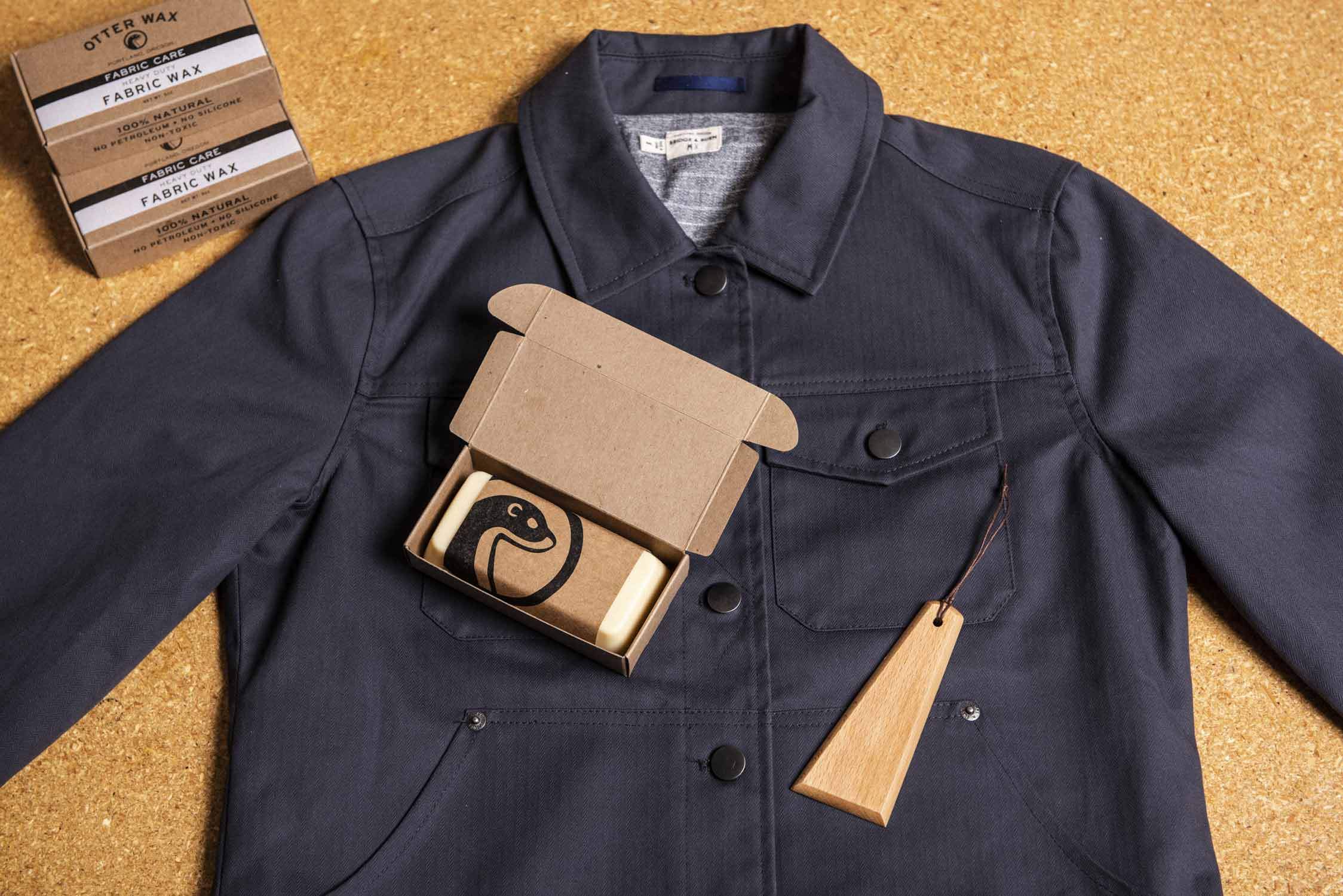
How To Wax A Bridge & Burn Trucker Jacket
For this tutorial, we teamed up with our good friends at Bridge & Burn to wax up one of their new Douglas Grey Herringbone jackets. The jacket is constructed from this really great factory-waxed British Millerain fabric woven with a subtle herringbone pattern.
This particular fabric is really easy to work with for a couple of reasons. First off, since the fabric is woven really tight, it lacks the 'toothiness' of a heavy canvas, which means that it won't take as much wax to fully treat the jacket. Additionally, we're working with a factory-waxed fabric that's already been saturated with wax, so naturally we'll end up using less than we would with an un-waxed fabric.
We only ended up using about half of one of our Large Bars on this jacket, and we applied a pretty thick layer of wax.
You might be wondering, why it's even worth the effort to Otter Wax a jacket that's made from factory-waxed fabric in the first place. Two reasons:
1. It will vastly improve upon the existing waterproofing ability of the fabric. Water is going to bead up and roll right off.
2. The fabric will take on somewhat of waxy-shine that gives it the slight appearance of leather. It's going to look awesome.
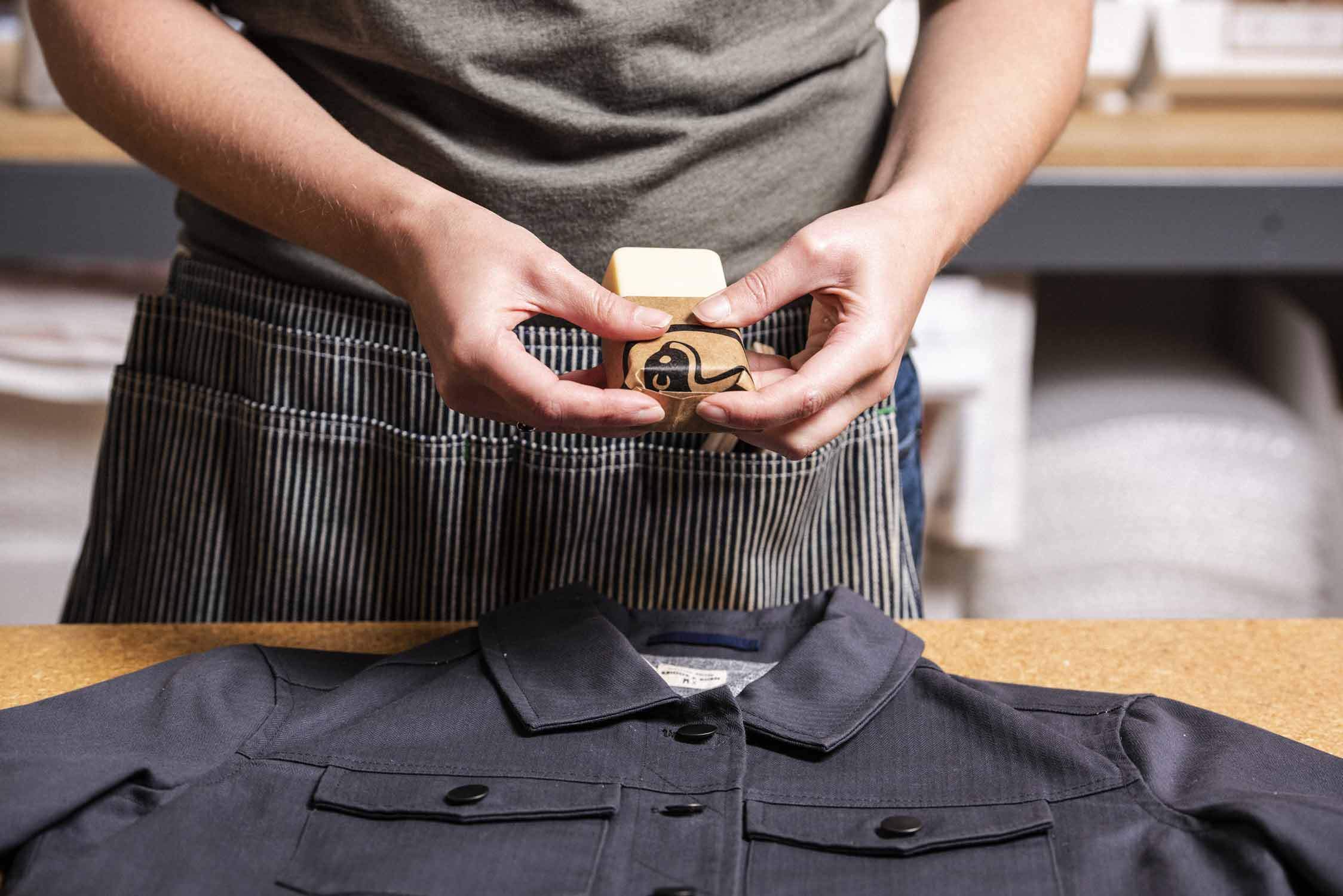
Pushing the bar out of the wax paper wrap helps you keep a nice grip on the bar while you're waxing. You'll inevitably get some wax on your hands, but it definitely helps keep the mess factor under control.
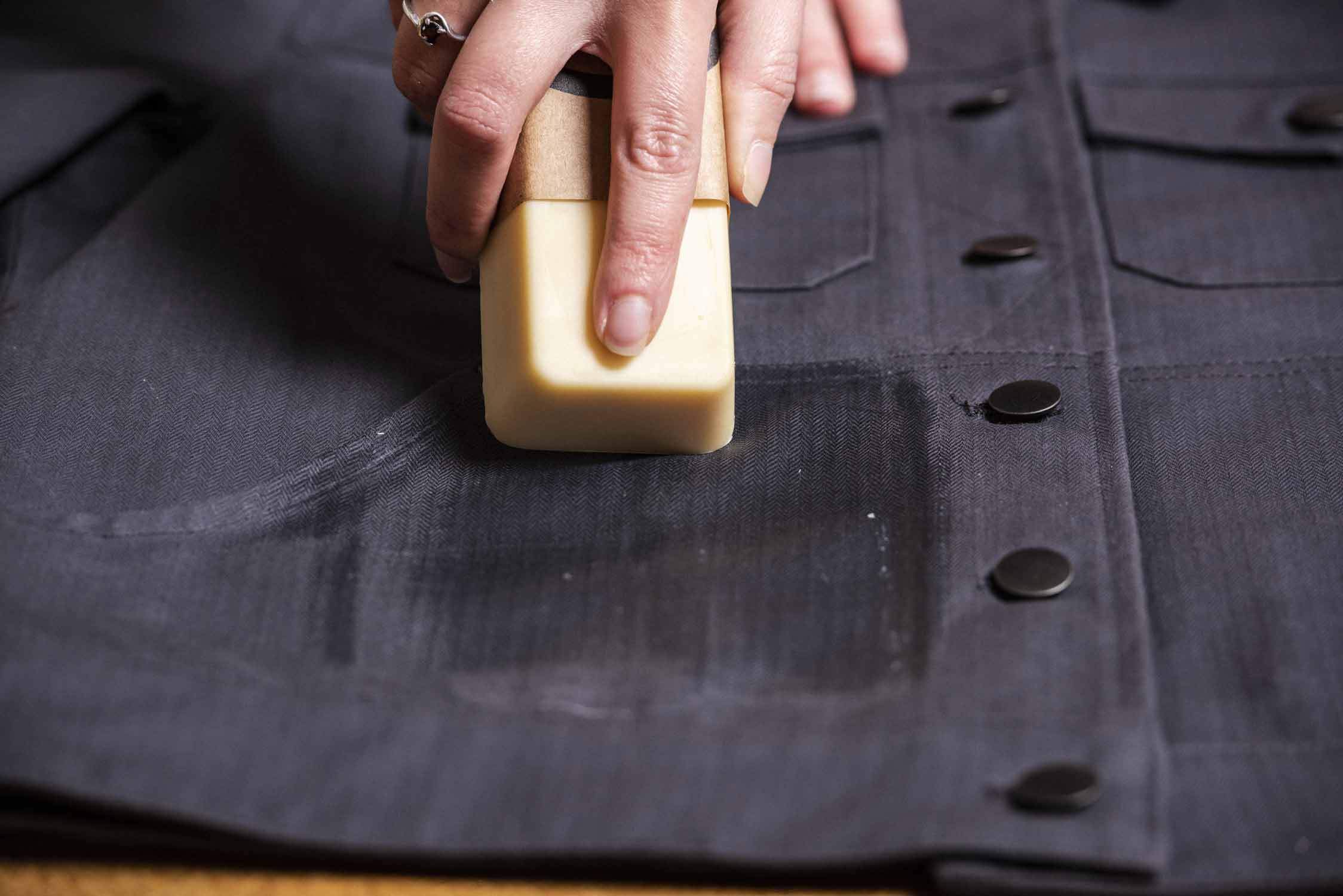
Start by applying downward pressure. Not so much that you end up chipping the bar, but hard enough that you create some friction when you begin rubbing the bar back and forth on the fabric.
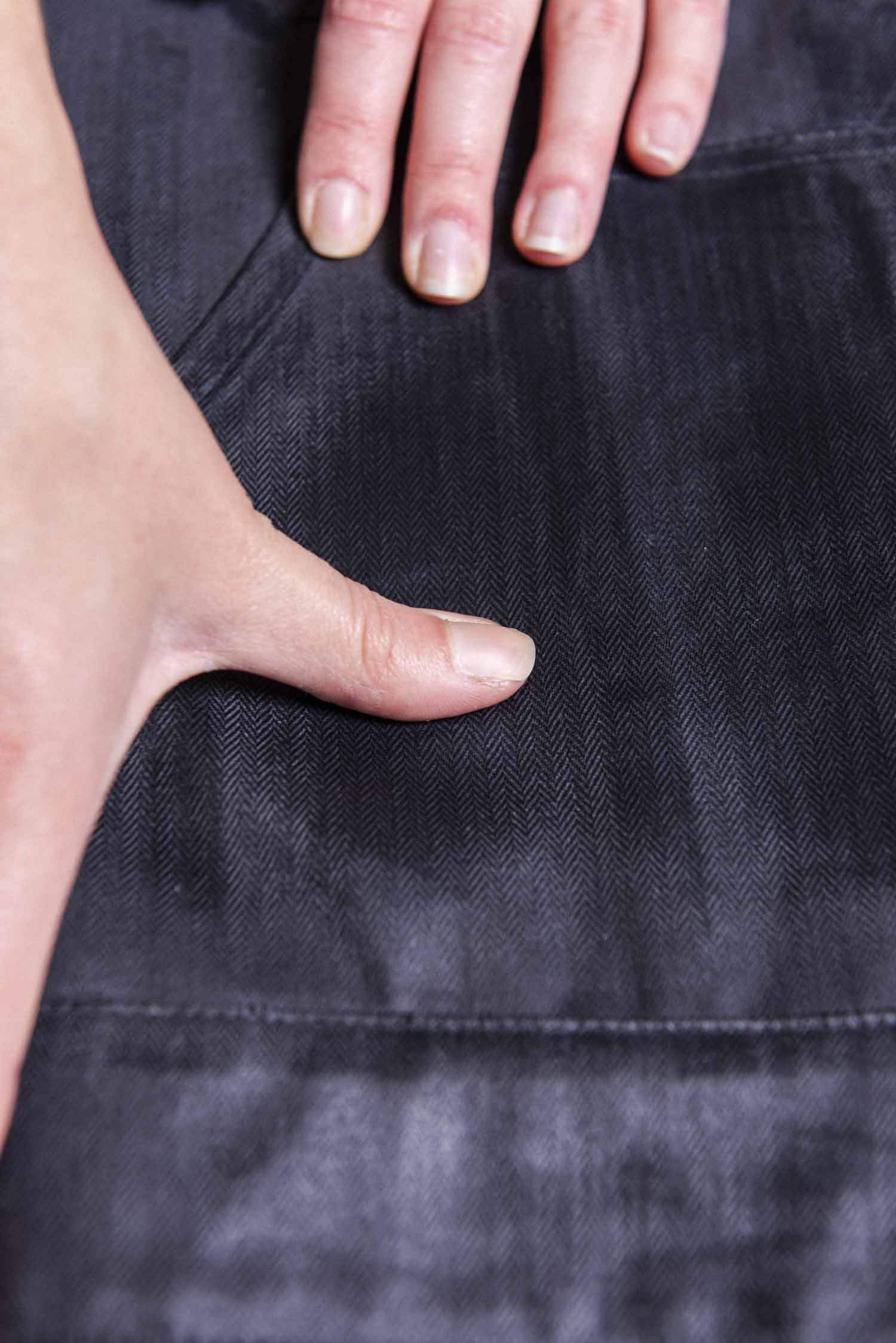
Once you've thoroughly waxed a small area of the jacket, smooth it out with your fingers or with the beveled edge of one of our Smoothing Tools. This helps work the wax into the upper layer of the fabric and helps the wax bond to the garment.
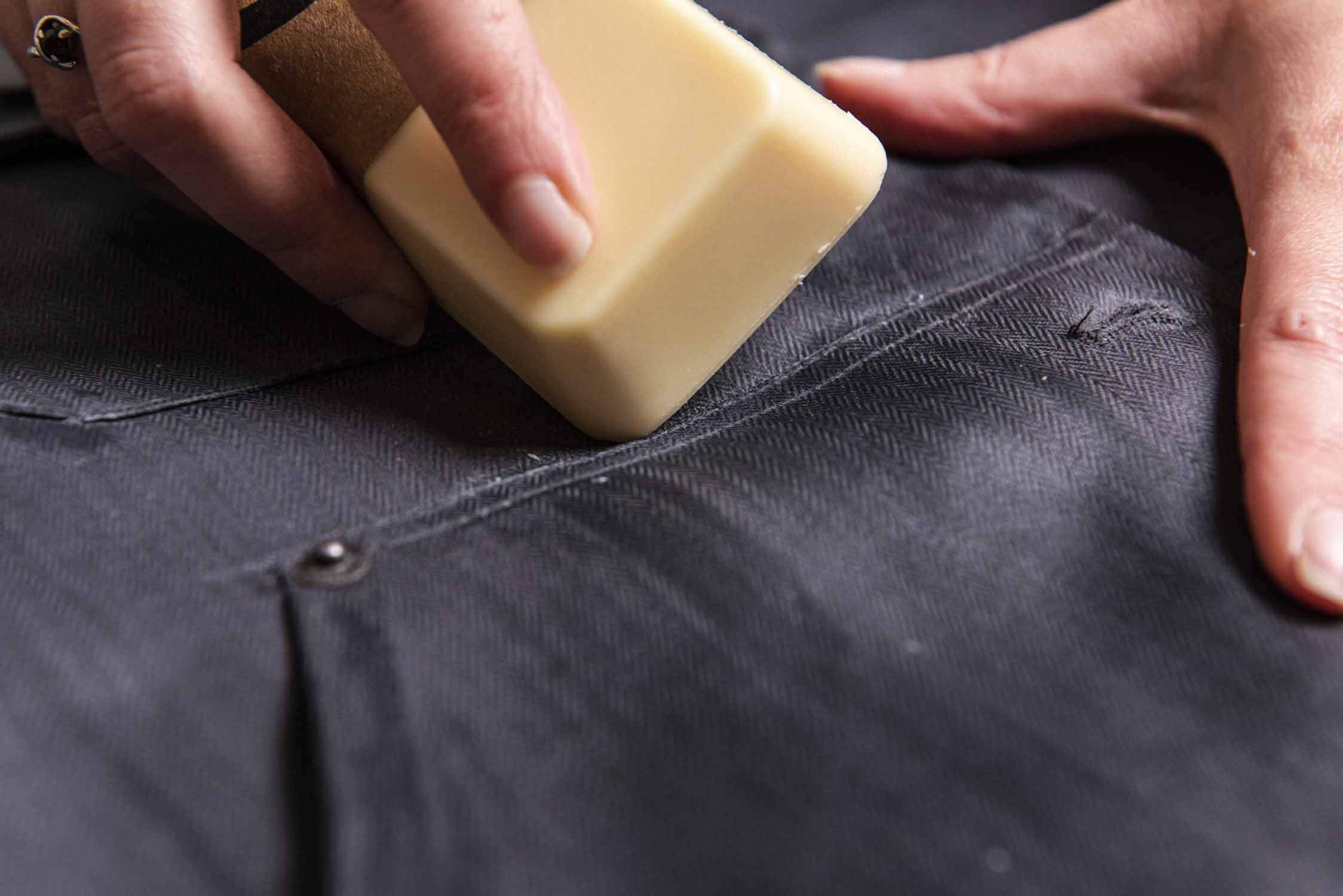
Utilize the edges of the bar for hard-to-reach spots like seams and pockets.
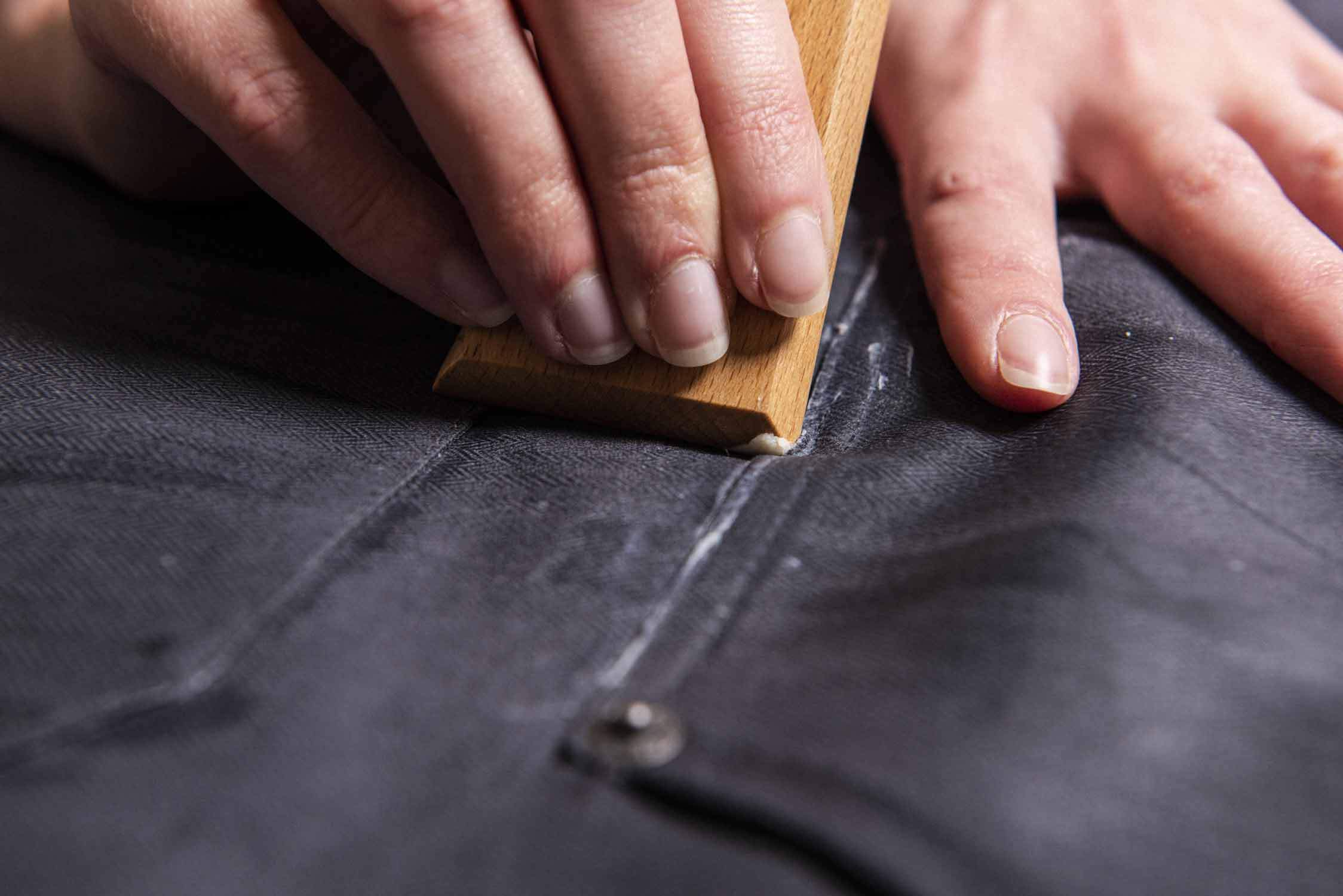
No matter what fabric you're waxing, you'll always end up with the occasional clumps of wax that form when the wax collects around seams.
To help even things out and remove any unsightly clumps of wax, use the sharp corner of the Smoothing Tool to scrape it out and then smooth out the area with the beveled edge.
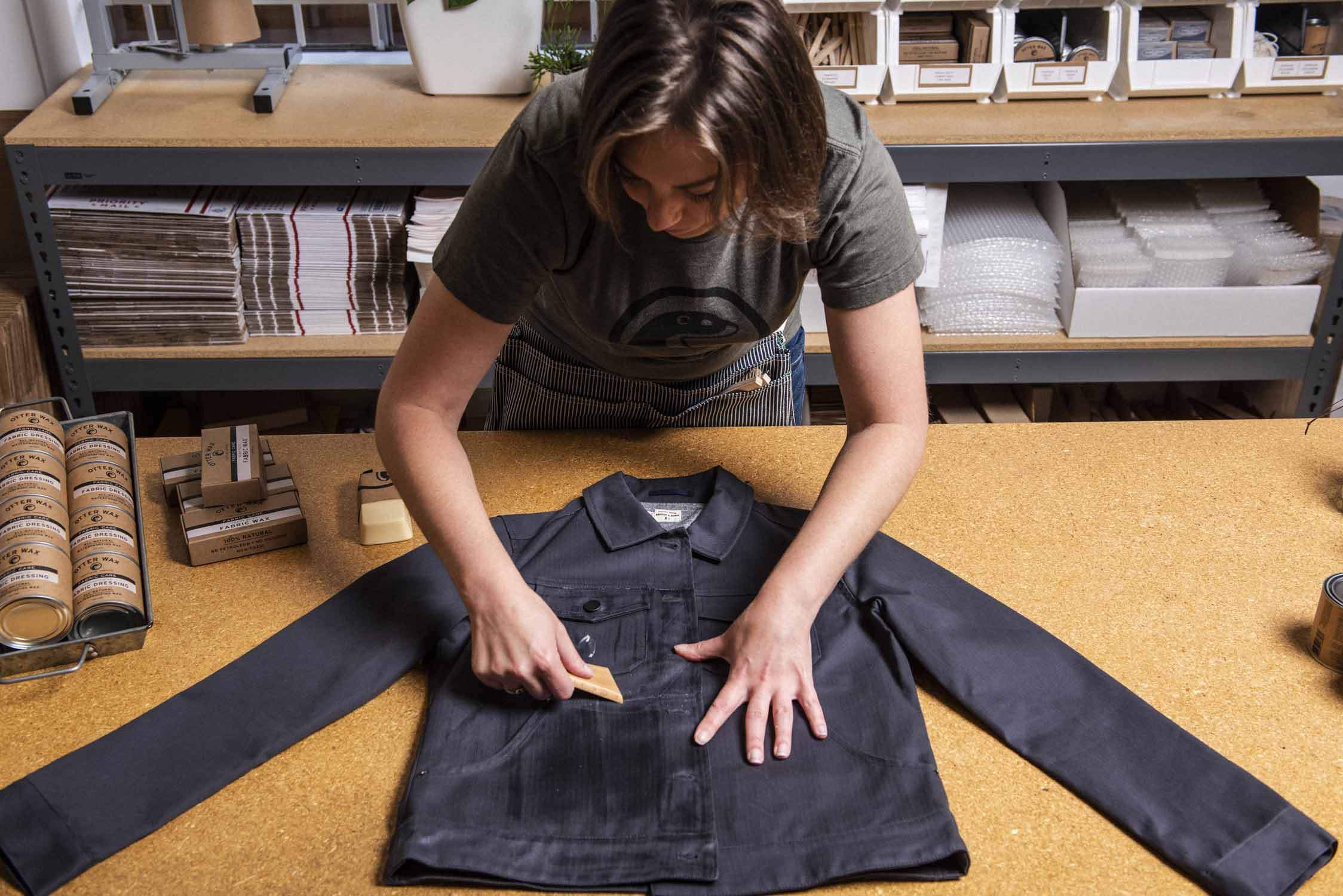
Once the jacket has been fully waxed, you'll want to hang it in a warm, dry place for about 72 hours to allow excess oils to evaporate off the fabric, leaving the wax bonded to the fibers. But make no mistake, waxing fabric will always, always change the way that a fabric looks and feels. Even after 72 hours, you can expect to feel a slight tack to the jacket. It's perfectly normal, and will continue to fade over time.
If you're concerned about the wax coming off on furniture or car seats, you can simply rub the waxed fabric between your finger. Did any waxes or oils end up on your hands? If so, just use some caution around furniture and car seats and take the jacket off before sitting.










